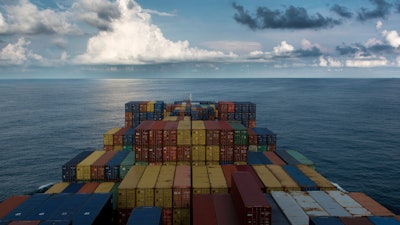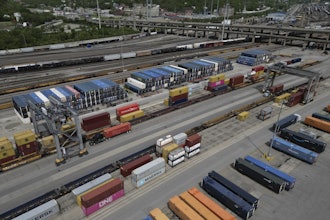
Supply chains have been put to the test over the last two and a half years, to put it mildly.
The coronavirus pandemic brought the worldwide economy to a standstill and its tremors are still being felt, incidents like the blocking of the Suez Canal further exacerbated existing issues, and worldwide political tensions have had an additional effect on the supply chain.
Each disruption, let alone the compounded effect of these multiple disasters, causes financial losses, production delays and, in the end, an ebb in customer loyalty.
As Richard Howells, an SAP supply chain expert, says, “If companies have not addressed the increased risk across their supply chains at the start of the pandemic, they will again be seeing shortages of materials and products. The need is for resilient supply chains that address topics such as identifying alternate sourcing strategies to reduce dependencies on individual suppliers in low-cost regions.”
What has prevented companies from building a resilient supply chain, and how can they fix that problem?
Four Important Challenges that Supply Chain Companies Must Address
Any one of these factors by itself could have a significant business impact:
Lack of data visibility
Companies need the tools to make decisions in a timely and effective manner, and one of the most vital of those tools is data. From the World Economic Forum: a mere 9% of companies actively use software to collect data on all their business processes, and for those who do, only 21% of managers are satisfied with the quality and availability of the information they do collect.
Data collection strategies need tools and automation to be done effectively and at scale, as manual collection is too time- and cost-intensive. Newer technology tools, including those based on the Internet of Things and artificial intelligence, combined with sound data analytics management are available to help companies achieve that objective.
Logistics disruptions
The only thing that is predictable about global logistics disruptions is that they happen; when, where, and how can come at any time form any direction or cause. Any disruptions to the supply chain can have global ripple effects, resulting in warehouses full of undelivered goods on the one end, or shortages of goods where deliveries might stop altogether.
Considering alternative supply chains is one way to counter this channel, including optional storage locations, and alternative last-mile delivery solutions.
Over-reliance on third parties
If you have just one major supply chain partner, the fate of your supply chain is too closely tied to the fate of this partner. If there is a failure, the lack of supply chain alternatives can affect everything from your ability to deliver, to the quality of goods, to your costs.
With the recent global disruptions companies, to avoid these problems, need to look for different – and multiple – logistics and transportation partners in order to diversify their supply chain and spread the risk.
Inventory optimization failures
“Just-in-time” inventory models, predicated on consumer demand, work well to save money on transportation and storage costs. But in a global supply chain disruption, it can leave suppliers in a bind, unable to respond quickly to changing demand.
Safety stock is one way hedge against just-in-time failures, but it is far from a fool-proof way of guaranteeing you can meet demand with supply. Digital supply chains, on the other hand, help optimize inventory, especially for growing suppliers who work with more than one partner.
When supply chain disruption occurs no matter the size or the cause, preparation and rapid response is crucial for short-term continuity. However, ensuring long-term supply chain sustainability should not be ignored. Here are five ways to help accomplish this:
- Duplicate your most crucial supply chain stages: “Digital twins” allow you to simulate and copy every step in a supply chain before you even implement it. This redundancy approach also helps you identify previously unknown suppliers and find new supply channels.
- Test with “what if” scenarios: Before you make any changes to your supply chains, test them with “what if” scenarios to make sure they will work as desired when you implement them. “What if” scenarios help you practice your ideas, as well as identify vulnerabilities which you can then plan for. This sort of planning should be continuous, as new vulnerabilities and potential issues should be identified promptly.
- Share data with your partners: Data transparency is viral to collaborating effectively with suppliers. The more timely and accurate information each partner has, the better-optimized the supply chain, the more predictable the transportation and storage costs, and the better decision-making occurs, during normal operations and during critical disruptions.
- Diversify your supply chain network: As mentioned above, over-reliance on one partner is dangerous. To ensure the sustainability of your supply chain, collaborate with multiple suppliers. Use different suppliers for the same products and various transport and logistics services in one specific region to diversify your chains and avoid a single point of failure. It will optimize your supply chain strategy, minimizing delay and downtime risks.
- Choose technology solutions wisely: Efficient and sustainable supply chain operations can rarely be done manually, especially with the scale involved. In the time – several days to several weeks - it would take to manually optimize a supply chain, the data you are relying on may already be out of date or irrelevant. A proven suite of tools implemented by a knowledgeable partner should cover all the logistics, manufacturing, planning, and operations needs.
While it is easy to idealize how supply chains worked before the pandemic, the truth is that they could never return to their pre-2020 state. Disruptions from many global and local causes will continue to threaten supply chains and keep them under continued pressure. Businesses must transform supply chains now with forward-looking strategies, solutions and tools to be always ready for market changes and disruptions of any kind.
Eric Stajda is the vice president of services and product development at LeverX.






















